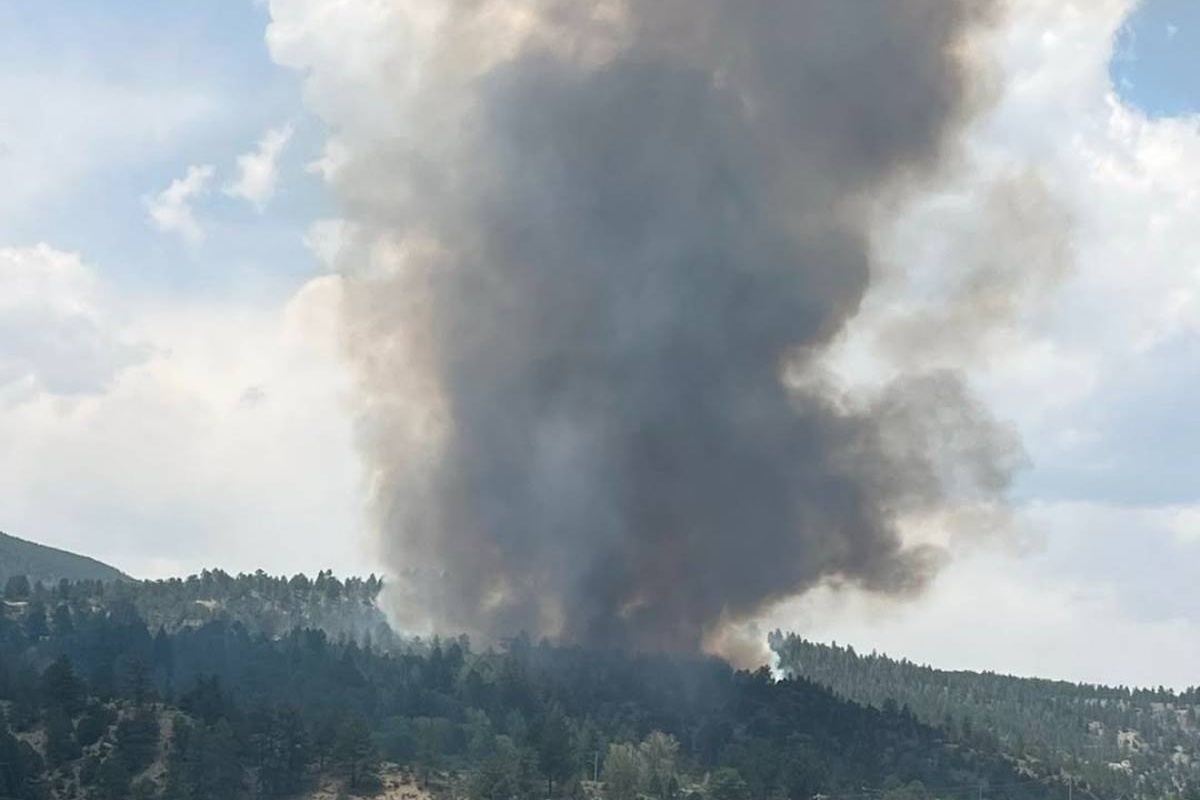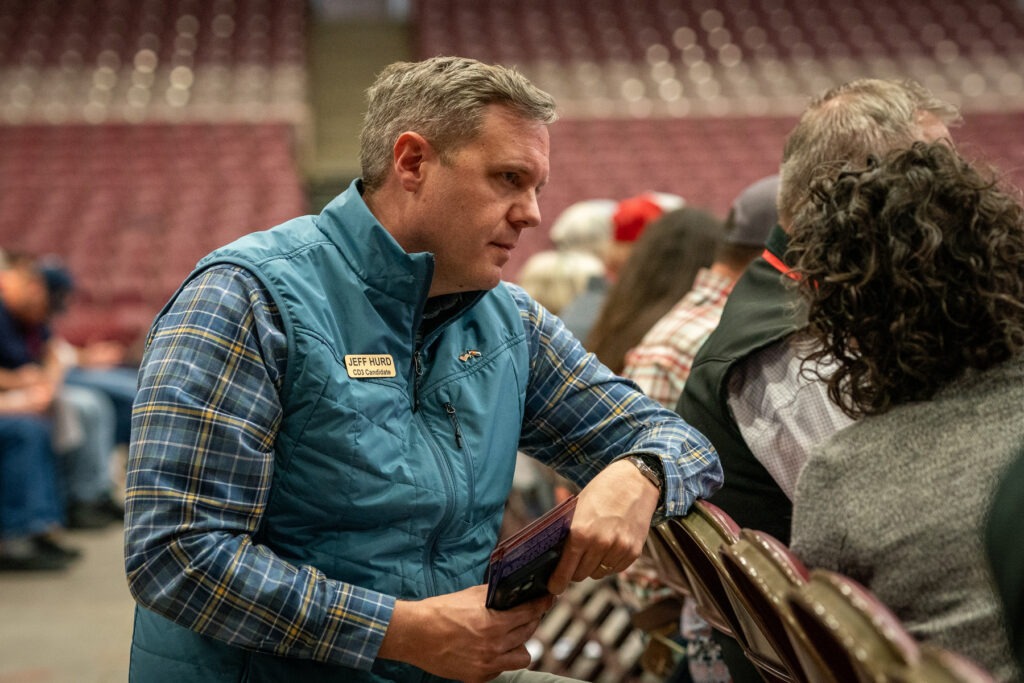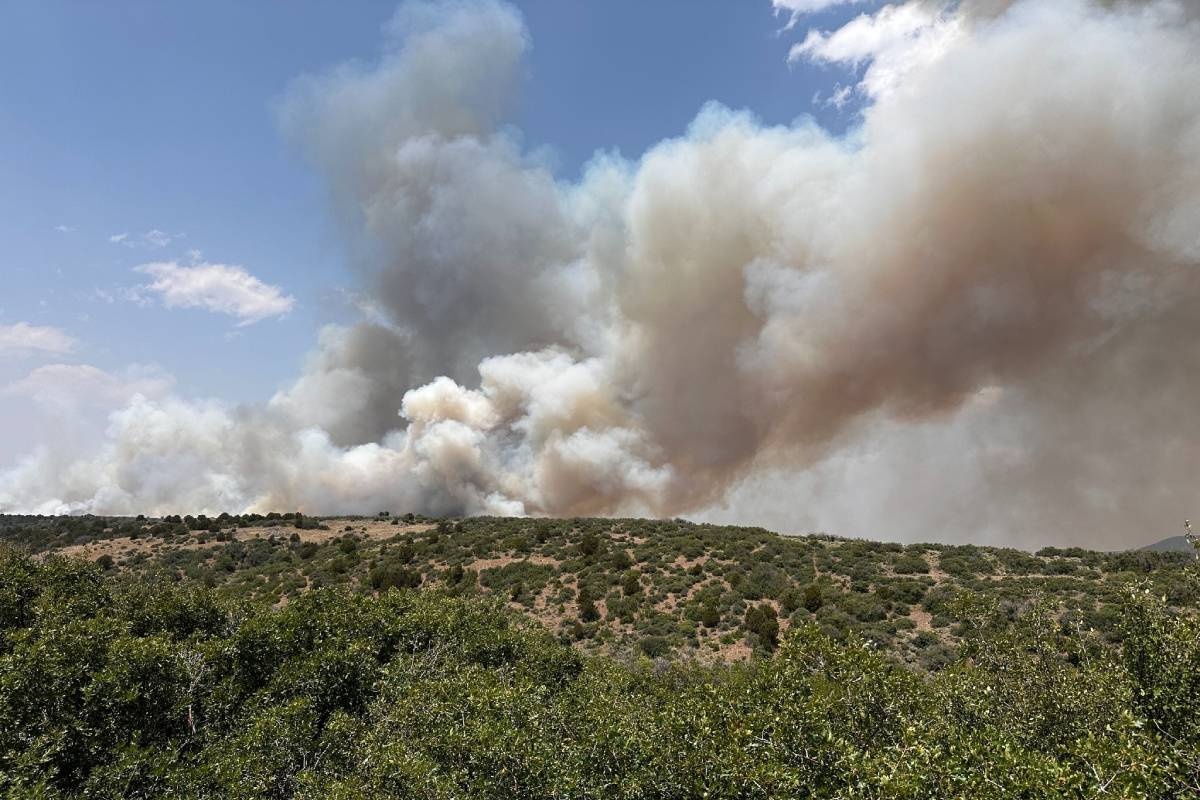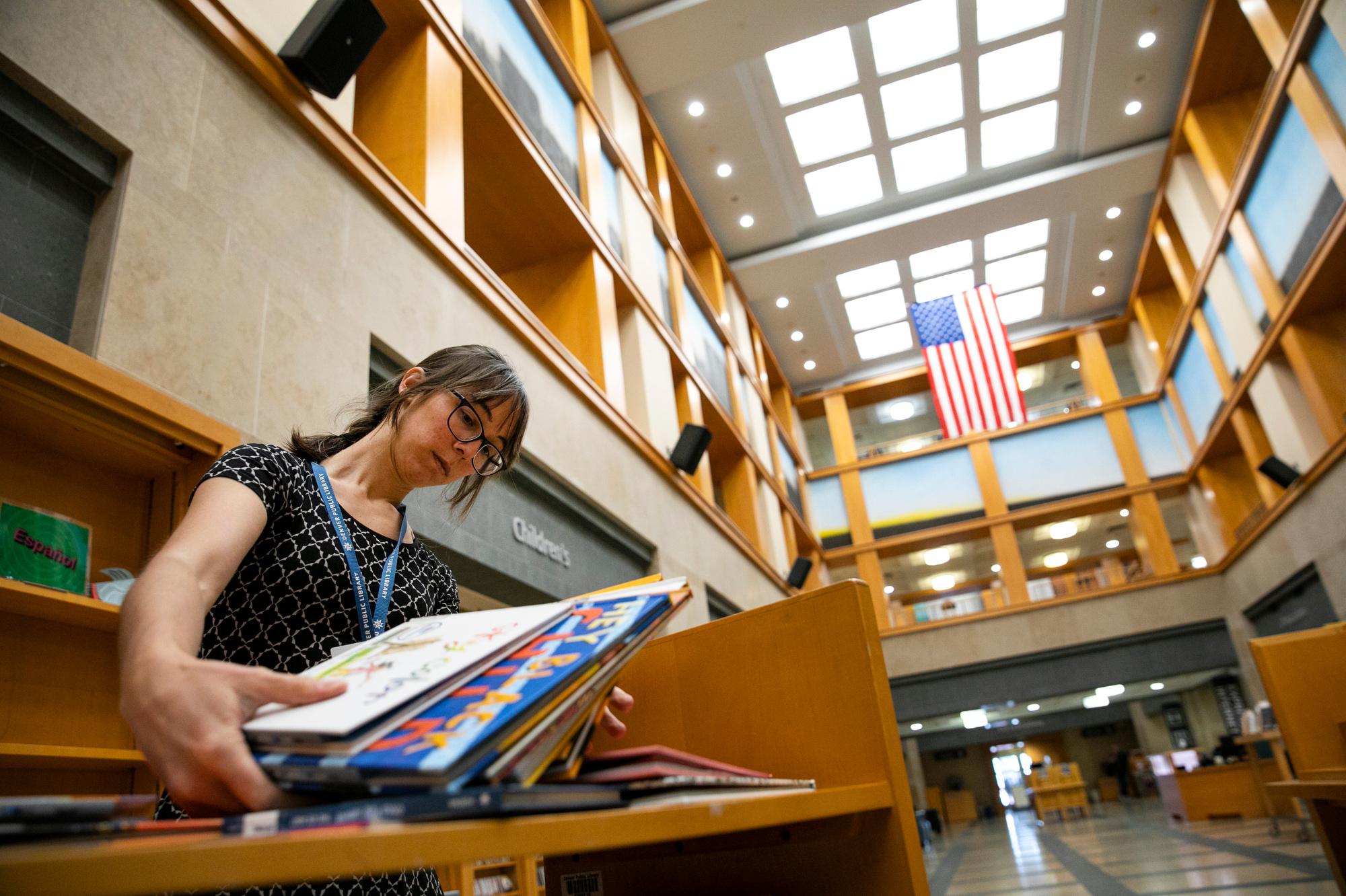
Creating an interactive in-house museum. Renting out saws, cake pans and vegetable seeds. Providing job centers to connect the unemployed to companies with jobs to fill.
These are some of the innovative, mission-expanding ways that libraries are staying relevant around the country and in Colorado, as the internet, smartphones and other technology have overwhelmed their traditional roles of lending books and doing research.
In Pueblo, a new permanent exhibition on the history of communication has recently opened to lure new patrons. In Leadville, a new tool lending program allows patrons to rent miter saws. In Denver, libraries are on the November ballot with a tax that would allow for expanded programming and job centers.
“Libraries right now, especially in the 21st century, are community spaces. We are not just book repositories anymore,’” said Lessa Kananiʻopua Pelayo-Lozada, adult services assistant manager for Palos Verdes Library District in southern California, and current president of the American Library Association. “We are vibrant centers that react to the needs of the community.”
One feature offered at her library is the chance for patrons to submit their artwork for a juried show that’s displayed on a library wall. This kind of innovation is something libraries have needed to do for decades, according to Jim Duncan, Executive Director of the Colorado Library Consortium.
“I think it’s important to note that the innovations that have been going on in libraries have been going on in Colorado for thirty years,” he said. Around the state, he noted a few examples that make his case.
“The Flagler library in [the] Eastern Plains, they check out cake pans. John C. Fremont Library in Florence, they offer a seed library where community members can come in and exchange their vegetable, flower and plant seeds,” he said. “At Denver Public library, people can even learn to make videos. Libraries are hubs for a lot more than reading books.”
A museum about the history of communication, from rock art to TikTok
Other non-bookish innovations are happening in places like Pueblo, where the 1,200-square-foot InfoZone Museum reopened Oct. 2 inside the main branch of the Pueblo City-County Library District. It’s a collection of curated stand-up panels that takes viewers through the history of communication from rock art and petroglyphs made in Southern Colorado in the early days, to TikTok and YouTube of today.
It also displays newspapers in languages such as Slovenian and Greek that were once published in Pueblo. There are also places where exhibit-goers can select audio clips to listen to and historical photos to click through.
Curator Nick Potter, 35, said that an earlier iteration of the museum, about one-third the size, focused mainly on the Pueblo Chieftain and its history, without all the interactive features. Called the InfoZone News Museum, it was housed on an upper floor from around 2004 or 2005 until last September. Then it closed for a $300,000 expansion with funding from the Hoag Rawlings Foundation.
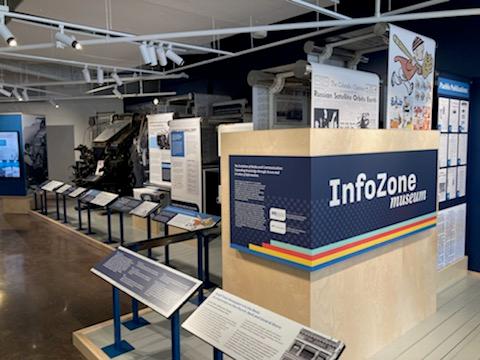
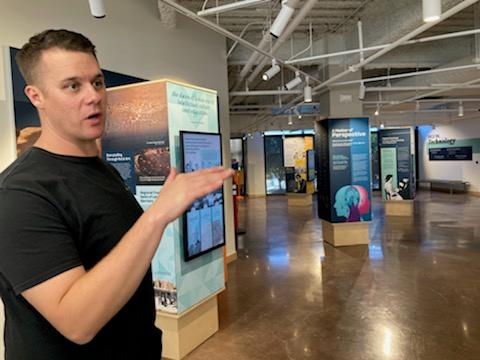
When the museum reopened in October, it was set up on the main floor, near the entrance to the part of the library where the books are located, so that people could treat the museum as a destination, which might pull them into the library as well.
“We can bring in mass comm students [from local schools] that normally wouldn't have come to the library, and we can explain the history of information to them,” Potter said. ”The museum inside the library is a novel thing, so that will bring people inside the library.
Creating the museum on-site was part of an effort to make use of not only the library’s space, but also its belongings.
“We wanted to be able to pull items from our local history archives and vaults in a way that hadn't been done before,” said Potter, who curated the exhibit over a two-year period. Leading a tour, he compared his encyclopedic knowledge of the museum’s features to the grasp of facts by the movie character Rain Man, and said, “If I talk too much, and if I’m a little extra, you can reel me in.”
Library cards can check out home and garden tools, too
The passion he conveyed making the museum available was replicated by a librarian 160 miles away in rural Leadville. Brena Smith, 50, the director of the 8,000-member Lake County Public Library has a master's degree in library science and has been at librarying for several decades. The goal there, she said, is “to serve them in ways that go beyond learning and scholarship.”
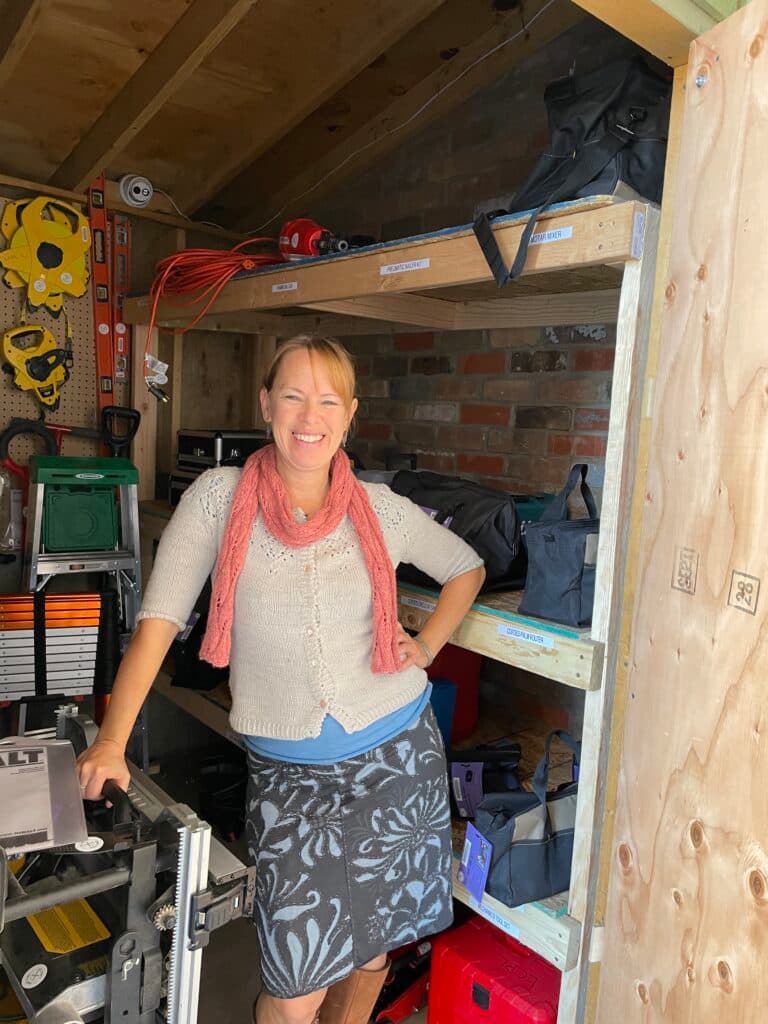
With a $25,000 grant from a local non-profit, she was able to open a tool library in May, with more than 120 tools for patrons to rent, some of them in kits.
“We have everything from hammers and screwdrivers to a table saw and a miter saw,” Smith said. A larger saw is attached to a dolly, and when folded up, it’s about five feet tall, making it hard to fit it on a shelf along with the encyclopedias, but that’s no deterrent: the bigger items are stored in a shed on the library grounds, and everything else is stowed in closets. Library card-holders needing a tape measure and a level have to get some knowledge before they can take them home, she said.
“We first have people go through an orientation, and I tell people about the grant; I go over all of our policies and procedures and have people sign a liability waiver,’’ Smith said. Then, any cardholder can rent out a tool for free.
The tool-borrowing idea stemmed from a similar project she heard about in the Bay Area, where a library there began renting tools to patrons in the late 1970s. Of the tools for rent, Smith said, “those are the most unusual above and beyond just books, and I’m always looking for ideas.”
A Denver ballot initiative would fund new programs via a tax increase
Others are looking for ideas of the best ways to serve patrons, as well.
Denver’s library system is now asking voters to approve a tax increase that would be used to provide raises and expand technology and programming, including job centers.
A ballot initiative that could increase property taxes a few dollars a month for Denver homeowners would net the library system millions of dollars annually to “expand hours of service to ensure access at night and on weekends, enhance programs and services for specific communities including children, older adults, immigrants and refugees and job seekers, ensure access to technology, expand collections of linguistically and culturally diverse materials, reduce wait times for materials, increase wages for staff and address a long list of deferred maintenance and capital improvements that are needed,” according to StrongLibrarystrongDenver.org, a website supporting the ballot initiative.
If a house were valued at $585,000, which was the median listing price for September 2022, the increase would be $5.23 per month.
Making libraries more accessible for non-native English speakers
Whether libraries are meeting needs of the communities they serve is not always clear, especially for non-native English-speaking people in the Hispanic community.
The Colorado chapter of reFORMA, a national organization that makes libraries more accessible to people whose first language is not English, will hold its 10th annual conference on Friday at Loveland Library, where librarians from around the state can exchange ideas.
Slides shared during the conference from sessions including “Building Community Through Mentoring Services;” “How To Reach the Latino Community;” “Digital Literacy for Spanish Speakers through an Equity Lens;” and “Hispanic Students in Academic Libraries,” will be posted at reformacolorado.org after the conference, according to Monique Ramos, this year’s conference chair.
“We set out the call for different library staff across the state to come to the conference and present on different ideas and different programs and events that they’ve offered, to connect our libraries in all different areas of the state to Latinos and our Spanish-speaking population,” said Monique Ramos, who also works at Loveland Library.
A nationwide study looks to learn more
The nationwide Public Library association is currently studying how — and if — libraries are aiding community needs.
The 2022 Public Library Services for Strong Communities Survey, due Dec. 10, asks about how libraries are using unique programs, services and facilities to meet community needs, in response to a demand for data about how libraries help foster resilient communities, according to the survey’s webpage.
It’s a question that’s constantly being asked and debated, said Pelayo-Lozada of the ALA, who noted that some libraries have found value in offering workforce training centers and meeting spaces, among many other features.
“We’re not just focused on the traditional form of literacy anymore,” she said. “We’re looking at digital literacy, financial literacy, all sorts of ways that libraries can play a role. We are constantly evolving as libraries, to be what our communities need them to be.”

